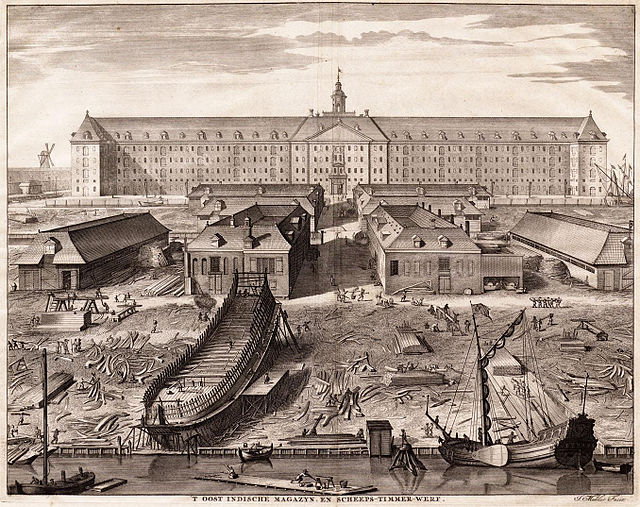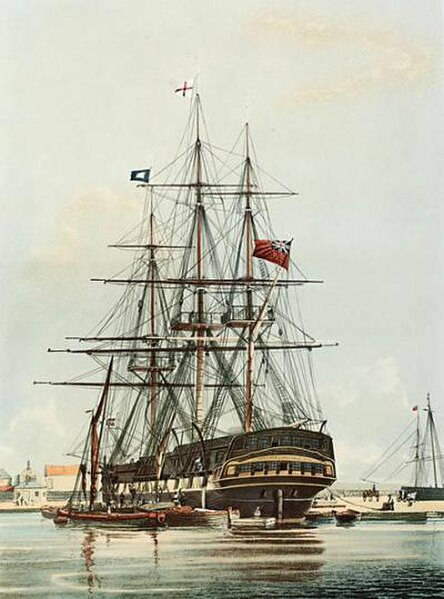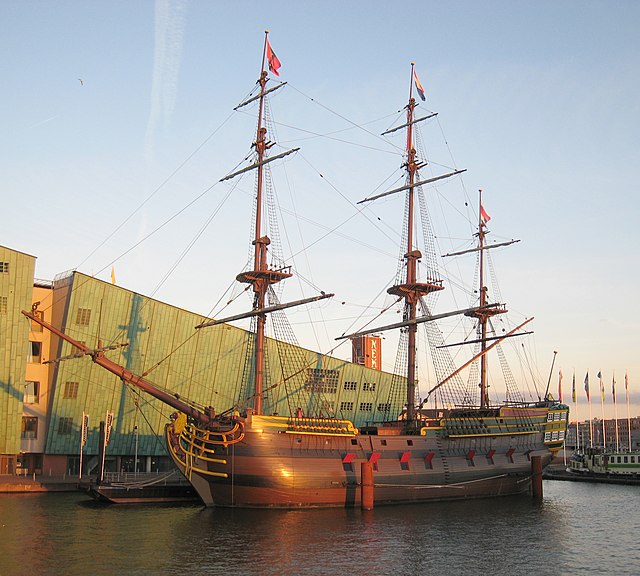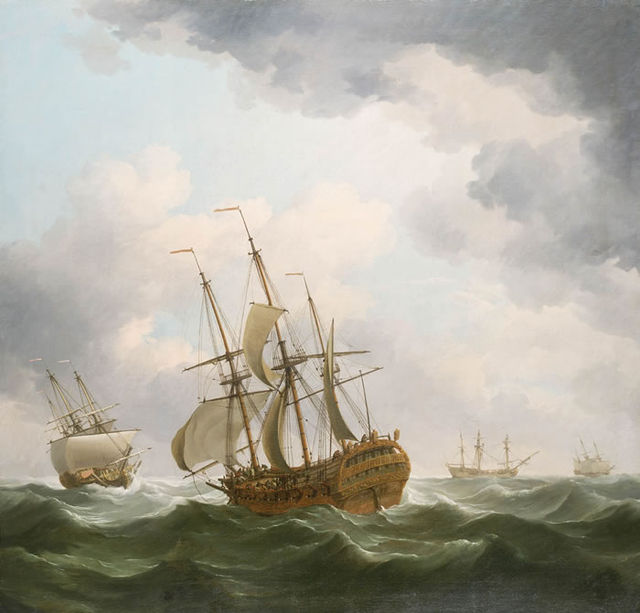The Amsterdam was an 18th-century cargo ship of the Dutch East India Company. The VOC was established in 1602. The ship started its maiden voyage from Texel to Batavia on 8 January 1749, but was wrecked in a storm on the English Channel on 26 January 1749. The shipwreck was discovered in 1969 in the bay of Bulverhythe, near Hastings on the English south coast, and is sometimes visible during low tides. The location in 1969 was found by Bill Young, the site agent/project manager for the sewage outfall being built by the William Press Group. With time on his hands during the long stay away from home, he followed up the rumour of the going aground. He was castigated by the Museum of London for scooping out the interior of the bow with a digger as it could have led to the structure collapsing. However, it uncovered the initial items which led to a more extensive excavation of the cargo which reflected life at the time. The wreck is a Protected Wreck managed by Historic England. Some of the findings from the site are in The Shipwreck Museum in Hastings. A replica of the ship is on display in Amsterdam.

The 1990 ship replica of the Amsterdam in front of the Netherlands Maritime Museum in Amsterdam
The shipyard of the Dutch East India Company in Amsterdam around 1750
Aerial view of the wreck of the VOC ship Amsterdam at low tide.
The VOC Amsterdam as visible at very low tide.
East Indiaman was a general name for any sailing ship operating under charter or licence to any of the East India trading companies of the major European trading powers of the 17th through the 19th centuries. The term is used to refer to vessels belonging to the Austrian, Danish, Dutch, English, French, Portuguese or Swedish companies.
The East Indiaman Repulse (1820) in the East India Dock Basin
A full-scale replica of the Dutch Indiaman Amsterdam
East Indiamen in a Gale, by Charles Brooking, c. 1759
East Indiaman Grosvenor by George Carter








